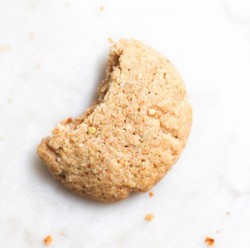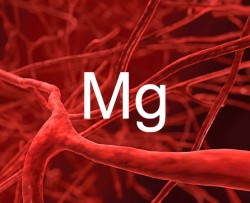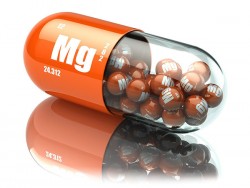Magnesium Factor
Home » Magnesium Factor
Looking forward to seeing you at the Markets!
What is Magnesium?
Magnesium is an essential mineral that is involved in many important metabolic functions in the body. It is a vital catalyst in enzyme activity, especially the activity of those enzymes involved in the production of energy.
About half of your body's magnesium stores are found inside cells of body tissues and organs. The other half is combined with calcium and phosphorus in the bone. Only 1% of the magnesium in your body is found in the blood.
The challenge is most of us have a magnesium-deficient diet which can result in:
• Restlessness
• Migraines
• Anxiety
• Fidgety legs
• Muscle cramps
• Not getting a good night sleep
• Low energy levels

Buckwheat Secrets
Buckwheat tastes great. This didn’t use to be a secret, as buckwheat pancakes were a southern staple. But, somehow it all got lost to us. So, buckwheat tastes great… even though it’s maybe the best source of natural magnesium out there. One cup of buckwheat gives you about a third of your magnesium needs for the day. It also gives you as much protein as eggs….but actually reduces your cholesterol and blood sugar levels! A study published in the American Journal of Gastroenterology that covered 16 years and 69,000 women demonstrated a 13% to 17% reduction in gallstones. Another study, in the Journal of Agriculture and Food Chemistry, reported in success in controlling diabetes through increased buckwheat consumption. Heart and colon conditions have also been known to respond favourably to buckwheat’s goodness.
Moreover, buckwheat is not technically a cereal grain. It’s a fruit seed. That means it can be eaten by people who cannot tolerate grain or gluten foods.
So why isn’t the whole world raving about this food? Well, in Japan (where buckwheat is called soba), this is nothing new. There is a delicious buckwheat noodle soup, cold buckwheat noodle salads (zarusoba), fried buckwheat noodles (yakisoba) and many other variations – all of them delicious.
You can use buckwheat flour to make your pasta at home or buy already prepared buckwheat noodles at the shop. Buckwheat grains can be added to soups for a hearty flavour, used in place of oatmeal, added to whole wheat to make fantastic bread, or used to make muffins and pancakes. It is also often added to rice to give it extra flavour, texture and colour.
And of course, you can fry up the noodles yakisoba style, which means throwing in all your favourite stuff and making a very filling meal.
However you do it, once you start to add buckwheat to your diet, you won’t want to stop. And your body will thank you.

The Magnesium Factor
About 300 biochemical functions of the body need magnesium. As mentioned earlier, it is required for the precise movements of muscles.
Its role in maintaining good bone health and healthy immune system is well known.
It helps in synthesizing protein in the body so no matter how much protein intake you have, it is of no use if there is no magnesium to break it down and absorb in the body.
Because of its varied role in our bodily functions, magnesium is responsible for maintaining almost all of our organs healthy.
Magnesium is an abundant element which is present in our bones. About 50%-60%of magnesium in our body is in the bones and rest is contained in the blood serum and soft tissues.
In an adult, the daily dietary allowance of magnesium is about 400 mg in males and 310 mg in females.
Buckwheat is one of the highest magnesium containing grains. About 57% of its total nutrients comprise of this element.
Wrap Up: High magnesium content in buckwheat translates into good bone health, healthy blood pressure and optimum muscle function. The high energy and protein intake in buckwheat are also synthesized by the magnesium present in it making it a well-rounded nutritious grain. It is a key ingredient that regulates the heartbeat by aiding heart muscles.

Boost Your Magnesium
The body needs magnesium for over 300 chemical reactions. One of them is to have great energy levels. If you battle to get out of bed on winter mornings, add some buckwheat to your day. One serving of buckwheat contains approximately 86mg of magnesium. That’s quite a lot if you consider that your daily recommended amount is 310mg.

Amount of Magnesium in Buckwheat
Top three buckwheat products high in magnesium
Below is a summary list for the top three buckwheat items ranked by the amount or level of magnesium in 100g.
1. Buckwheat flour, whole-groat: 251mg (63%RDA)
2. Buckwheat: 231mg (58%RDA)
3. Buckwheat groats, roasted, dry: 221mg (55%RDA)
Following on from the three top buckwheat items or products containing magnesium we have a more comprehensive break down of Buckwheat, and the highest item containing magnesium which is Buckwheat flour, whole-groat. We also give a comparison of average values, median values and lowest values along with a comparison with other food groups and assess the effects of storage and preparation on the 4 types of buckwheat.
Comparing magnesium in buckwheat vs spinach
The amount of magnesium in spinach is 79 mg per 100g. As magnesium percentage of the RDA, this is 20 %. Comparing with Buckwheat, in 100g contains 231 mg of magnesium. As a percentage of the RDA, this is 58 %. Therefore, Buckwheat has 152 mg more magnesium than spinach. In terms of magnesium percentage, this is 192 % more magnesium. Spinach has an overall nutritional value score of 68 out of 100, whereas Buckwheat has a nutritional value score of 15 out of 100.
The highest content of magnesium in the food items under the general description or type of buckwheat, is Buckwheat flour, whole-groat with 251 mg of magnesium per 100g. Comparing spinach with Buckwheat flour, whole-groat; Buckwheat flour, whole-groat has 172 mg more magnesium than spinach. In terms of magnesium percentage, this is 218 % more magnesium.
Amount of magnesium per 100 Calories
100 calories of buckwheat is a serving size of 0.29 g, and the amount of Magnesium is 67.35 mg (16.91% RDA). Other important and related nutrients and macronutrients such as Fat, in 100 Calories are as follows; Protein 3.86 g (7% RDA), Fat 0.99 g (1.46% RDA), Carbohydrate 20.85 g (16.03% RDA). This is shown in the magnesium RDA percentage chart below, based on 100 Calories, along with the other important nutrients and macronutrients.
Read more at http://www.dietandfitnesstoday.com/magnesium-in-buckwheat.php#RJZS2zgEYe0ssV2S.99






